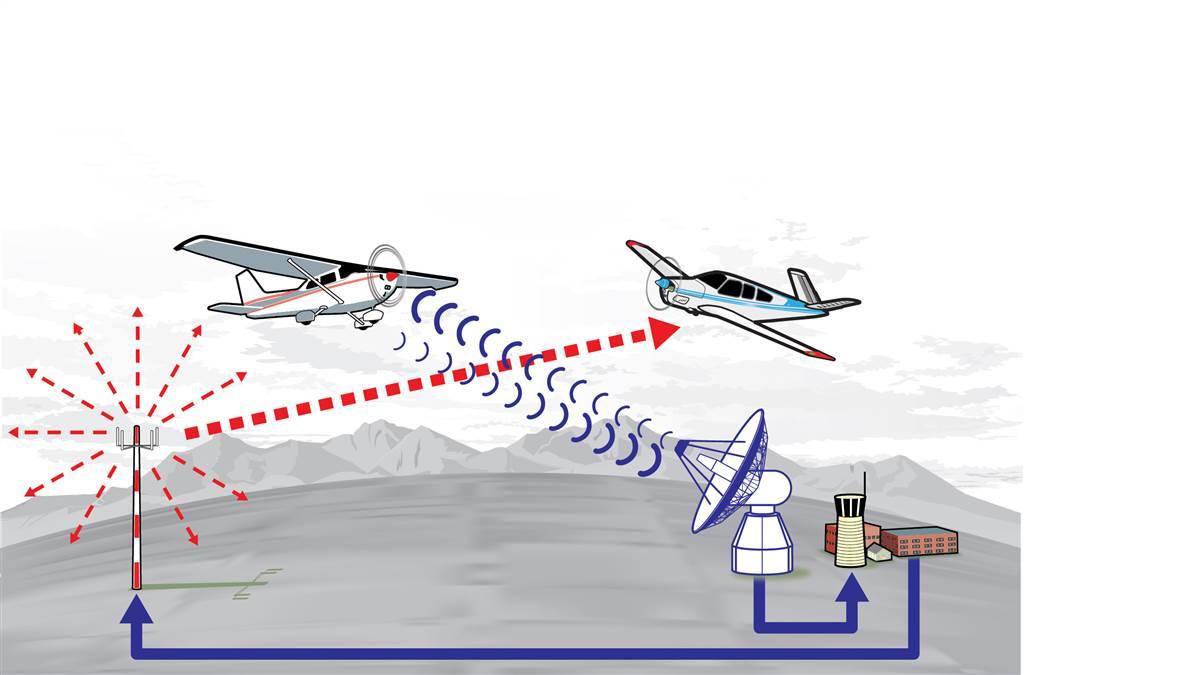How it Works: Traffic Information Service-Broadcast
TIS-B or not TIS-B?

The aircraft on the right has ADS-B. However, it cannot directly “see” the aircraft on the left, equipped only with a transponder. TIS-B shares its position, as determined by ATC radar, with ADS-B-equipped aircraft.
Illustration by Steve Karp
Well, that technology exists today, and Traffic Information Service—Broadcast (TIS-B) is a big part of it. But to understand TIS-B, it really helps to discuss the broader enabling technology, Automatic Dependent Surveillance-Broadcast (ADS-B).
ADS-B uses GPS satellites instead of ground-based radar to determine aircraft position. The FAA has mandated ADS-B Out equipage for operations after January 1, 2020, in any airspace where a transponder is required today. ADS-B In, which is optional, provides the ability to “see” other ADS-B-equipped airplanes.
However, aircraft equipped only with traditional Mode A/C transponders are invisible to ADS-B equipment. That’s where TIS-B comes in.
TIS-B takes the position and altitude of an air traffic control radar target, converts that information into a format that’s compatible with ADS-B, and then broadcasts the information to aircraft equipped with either of the two U.S. ADS-B datalinks, the 1090-MHz extended squitter (1090ES) and the 978-MHz universal access transceiver (978UAT) frequencies.
For a pilot to benefit from TIS-B, his or her aircraft must be equipped with ADS-B In, and operating in airspace with radar coverage.



